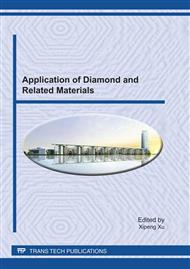p.316
p.321
p.326
p.330
p.335
p.342
p.347
p.352
p.357
Finite Element Simulation of Nickel-Based Alloy Cutting Process Based on DEFORM- 3D
Abstract:
To analysis cutting mechanism and heat transfer coefficient of Ni-based superalloy IN718, this paper introduced a three-dimensional finite element model for cutting process based on DEFORM-3D V6.1, and cutting force Fy and cutting temperature T under different feed rate f , cutting speed v and back engagement ap were obtained. The temperature variation during cutting process under different cooling method was analyzed. The simulation results indicate that the influence of back engagement ap on the cutting force Fy is the greatest, while that of cutting speed v is minor; and for cutting temperature T, influence of cutting speed v is the greatest, while that of back engagement ap is minor. Influence of heat transfer coefficient on highest temperature and average cutting force Fy is minor, but its influence on average temperature is quite obvious. Greater heat transfer coefficient is less average temperature.
Info:
Periodical:
Pages:
352-356
Citation:
Online since:
June 2011
Authors:
Price:
Сopyright:
© 2011 Trans Tech Publications Ltd. All Rights Reserved
Share:
Citation:


